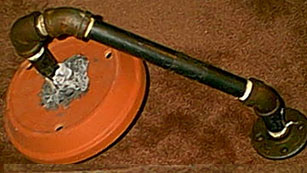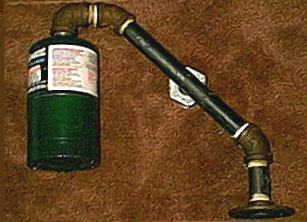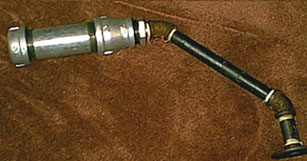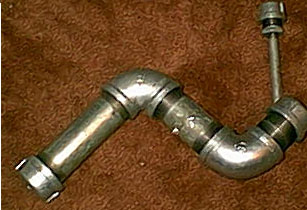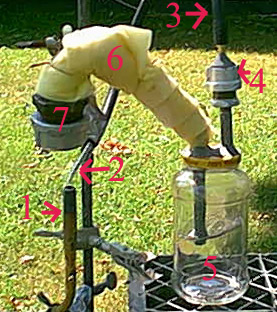Aluminium as a Reducing Agent, &c.
L. Franck. Chem. Zeit. 1898, 22, [25], 236-245.
In:- The Journal Of The Society Of Chemical Industry. 17, [6], 612-613.
June 30,1898
Action of Aluminium on Phosphorus Compounds—Phosphorus vapour when led over powdered aluminium, heated to a dull red beat in a current of hydrogen,
combines with it with incandescence, forming a dark greyish-black unfused mass, which is decomposed in contact with moist (normal) air, forming PH3,
and leaving a greyish-white powder. It is decomposed also by water, aluminium also by water, aluminium hydroxide and a brownish-black residue being
left ; and by acids and alkalis, which dissolve it almost completely with evolution of PH3. The compound remains unaltered when heated in air.
At more or less elevated temperatures, all phosphoric, acid compounds (meta-, pyro-, and ortho-salts alike) are decomposed by aluminium.
Metaphosphates, however, undergo the most complete change, according to the equation—
6NaP03 + 15AI = 6NaAl02 + 2Al203 + Al5P3 + P3
The addition of silica effects the release of the remaining phosphorus, thus :—
6NaPO3 + 10AI + 3Si02 = 3Na2Si03 + 5Al203 + 3P2
Calcium and magnesium salts are as efficacious as those of sodium, but the superphosphates of commerce are not available for the production of
phosphorus in this manner. If, however, bone ash be decomposed by hydrochloric acid instead of by sulphuric acid, a material suitable for the purpose
is obtained.
Hence phosphorus may be produced, with almost quantitative completeness of yield, at relatively low temperatures...
|
 )
)




